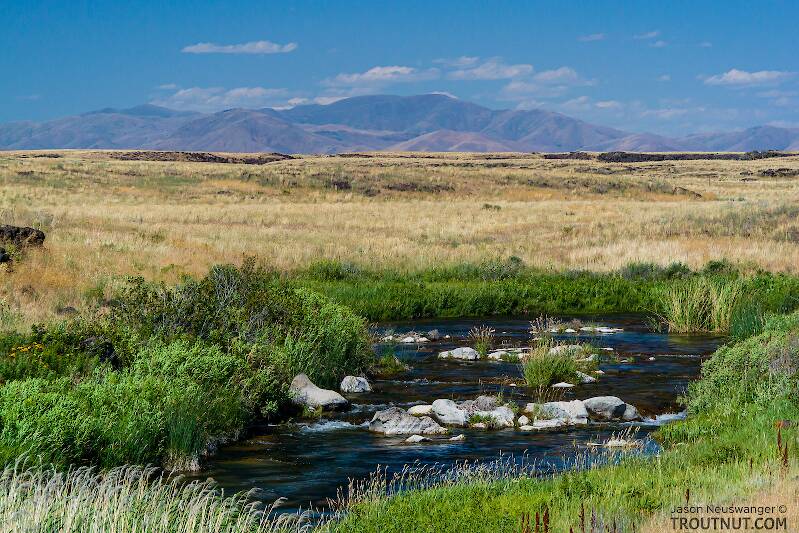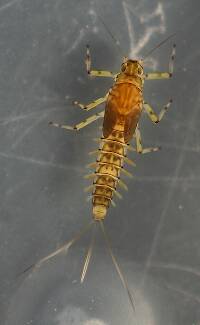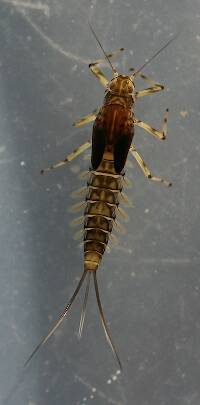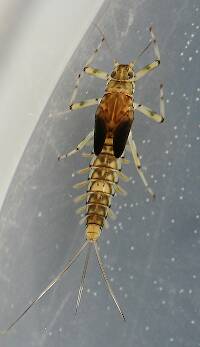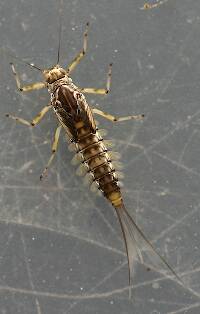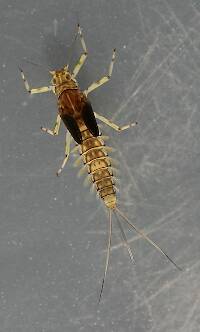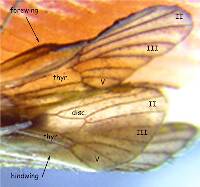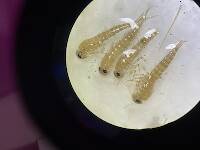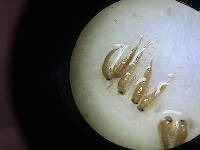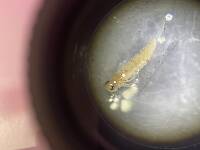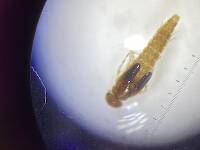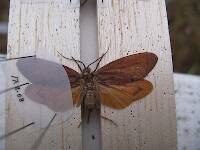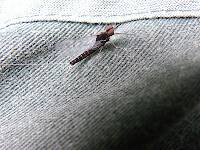
Hex Mayflies
Hexagenia limbata
The famous nocturnal Hex hatch of the Midwest (and a few other lucky locations) stirs to the surface mythically large brown trout that only touch streamers for the rest of the year.
Featured on the forum

Troutnut is a project started in 2003 by salmonid ecologist Jason "Troutnut" Neuswanger to help anglers and
fly tyers unabashedly embrace the entomological side of the sport. Learn more about Troutnut or
support the project for an enhanced experience here.
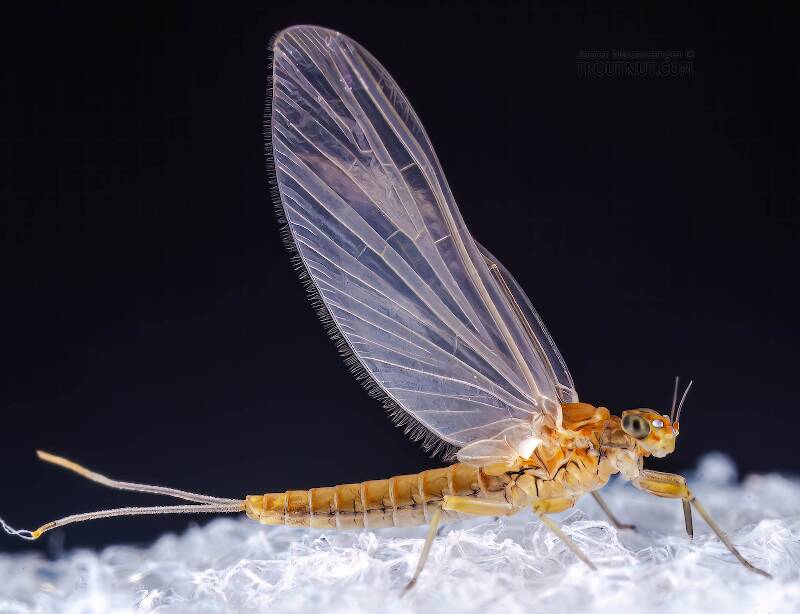
I'm guessing this specimen is in the genus Acerpenna because of the very sharp costal process on her hind wing. I'm guessing pygmaea because it is the most common species.
Editor note: Not Acerpenna. This is most likely Baetis. See comments on this male specimen for rationale. Also compare with the female specimen associated with it.
Editor note: Not Acerpenna. This is most likely Baetis. See comments on this male specimen for rationale. Also compare with the female specimen associated with it.
Troutnut on Jul 2, 2006July 2nd, 2006, 3:20 am EDT
How come?
Jason Neuswanger, Ph.D.
Troutnut and salmonid ecologist
Troutnut and salmonid ecologist
Taxon on Jul 6, 2006July 6th, 2006, 6:45 am EDT
Troutnut on Jul 6, 2006July 6th, 2006, 7:25 am EDT
Ok, thanks. I just looked at Leonard and you're right that the venation is strikingly similar (though not identical). They don't have very many other Baetis wings to compare to, though, so I'm hesitant to rule out the other species on those grounds.
The costal process on the hind wing is much sharper in this specimen than in the Leondards' drawing. I think that's a fairly important characteristic for this family and it's one reason I'm hesitant to call it Baetis.
Also, the Leonards show some intercalary veins on the hind wings of brunneicolor, which I don't see in this photo. That could be due to individual variation or bad focus in the photo, though.
The taxonomy of this whole family is such a mess right now. I really hope somebody publishes a definitive key to the genera soon based on something better than mandible setae and the like.
The costal process on the hind wing is much sharper in this specimen than in the Leondards' drawing. I think that's a fairly important characteristic for this family and it's one reason I'm hesitant to call it Baetis.
Also, the Leonards show some intercalary veins on the hind wings of brunneicolor, which I don't see in this photo. That could be due to individual variation or bad focus in the photo, though.
The taxonomy of this whole family is such a mess right now. I really hope somebody publishes a definitive key to the genera soon based on something better than mandible setae and the like.
Jason Neuswanger, Ph.D.
Troutnut and salmonid ecologist
Troutnut and salmonid ecologist
Troutnut on Sep 21, 2006September 21st, 2006, 5:28 pm EDT
I'm even more confident that this is Acerpenna now that I've photographed an extremely similar specimen from upstate NY. The new female was associated with a male which I also photographed, and it keyed fairly confidently to Acerpenna in Merritt & Cummins.
I've fallen a bit behind on posting new pictures I've taken. I've got about 30 new specimens to put up, I think, including the Acerpenna pair. All that's coming ASAP.
I've fallen a bit behind on posting new pictures I've taken. I've got about 30 new specimens to put up, I think, including the Acerpenna pair. All that's coming ASAP.
Jason Neuswanger, Ph.D.
Troutnut and salmonid ecologist
Troutnut and salmonid ecologist
Quick Reply
Related Discussions
Topic
Replies
Last Reply
11
Aug 29, 2014
by Entoman
by Entoman

